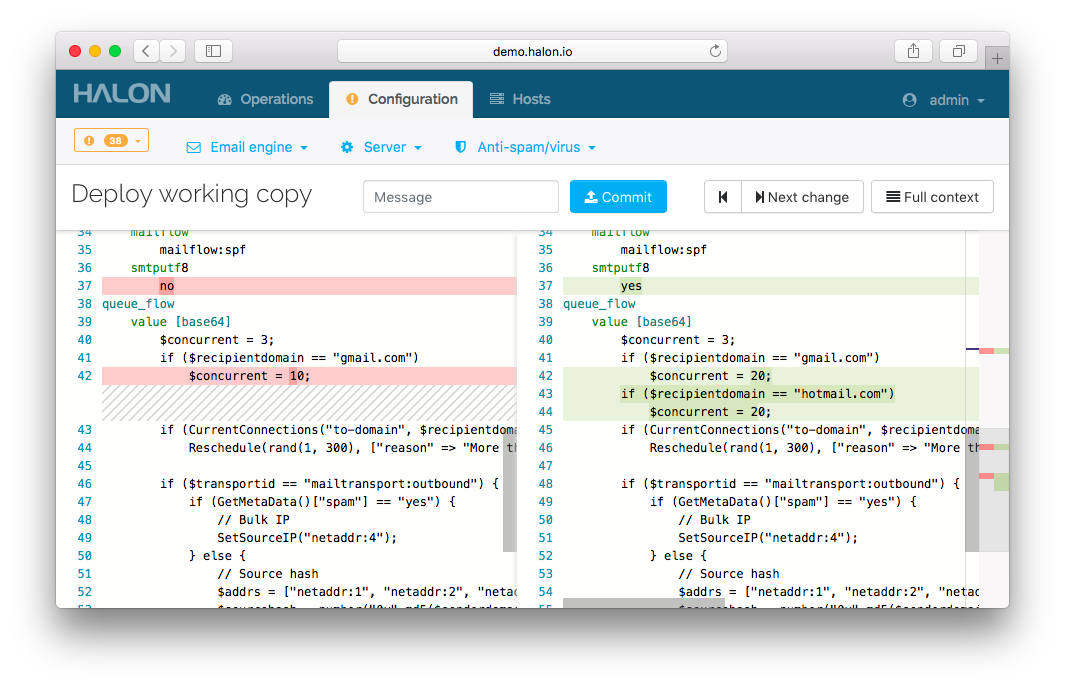Halon 4.0 a.k.a. “forty” is around the corner, and it has a strong focus on developer friendliness and deployment. Let’s take a peek on what’s about to happen!
Most of the work has gone into the SMTP server. Most notably, it now supports running two different configurations, complete with compiled scripts, in parallel. We refer to it as “live staging”, since it allows you to try out new code on a production host, for only some select traffic, based on conditions, such as IP address. We’ve also introduced a new persistent connection $context variable to all the SMTP server’s scripts, including the new MAIL FROM script, which can be used to pass data between SMTP stages or even RSETs, like
$context[$messageid][$recipient] = lookup($recipient, ...
since $messageid is regenerated with each RSET. Another major feature is SMTPUTF8, which allows for international (and emoji!) email addresses.
The scripting language itself has a new resource value type, used by the Socket() networking class which, in turn, is used to implement various extensions such as a memcached client. Another new scripting features is bitwise operators, which you can see in action by viewing the TOTP example’s code.
In addition to the live staging, management is significantly more distinct and reassuring thanks to a checkout/commit pattern, and a more expressive configuration format. As you begin to make changes, already tested using the live staging, as larger commits with descriptive messages, browsing the configuration revision history will become much more enjoyable. It also supports larger teams much better.

As usual, it’s based on the latest FreeBSD version; 11.0 in this case. It features LLVM’s LLDB, Receive Side Scaling (RSS) in some Intel network drivers, unmapped IO in Xen and VirtIO, Amazon AWS SR-IOV networking, Tx/Rx multiqueue in VMware VMXNET3, and much more.